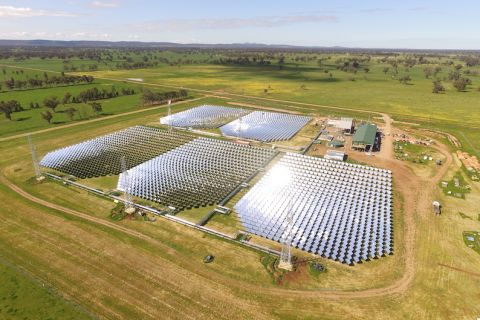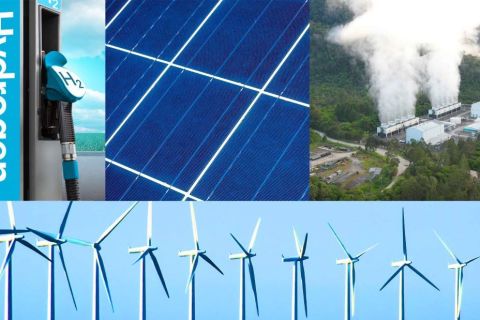There may be little that is new under the sun, but the way in which older inventions are redefined, grouped and used offers a view of how technology evolves to fit our needs. The case of the multifractured highly deviated (or horizontal) well (MFDW) has changed the scope of what is recoverable from ultralow-permeability formations and source rocks and consequently redefined a large area of well design and operation.
Highly deviated and horizontal drilling achieved recognized commercial viability during the late 1980s, but the roots of the technology sprang from the late 1920s and early 1930s as drillers experimented with the new technologies of rotary drilling and effective BOPs. These early wells were far from prolific as formation laminations and layers sharply limited vertical flow into the wellbore. For years, the primary use of horizontal wells was commonly regulated to being a coning control mechanism for vertical flow of gas and water in thin zones.
By the 1980s developments in the Austin Chalk, the North Slope and Bakken shales were the primary deviated U.S. well targets, while high-rate oil wells in thin sandstones and thick but naturally fractured chalks of the North Sea drew attention with developments in fields such as Troll, Dan and Valhall. Unstimulated deviated wells often produced from two to more than 10 times the rates of vertical wells in the same play. But even with successes in a few plays, highly deviated and horizontal wells still failed to produce commercial volumes in most formations unless open natural fractures offered vertical flow communication for fluids to reach the horizontal wellbore.
Gulf Coast
The 1950s laboratory for the first multiple fractured vertical wells was the stacked pay zones of the U.S. Gulf Coast that offered a layered mixture of sands of varied permeability and strength. As the technology progressed to multiple fractures in deviated wells over the course of the next two decades, techniques, tools and experience expanded, producing completion developments in these multiple producing horizons that included sand control improvements and profile modifications as well as stimulations for the more deviated wells that reached miles outward from a platform or raised pad. The breakthrough for horizontal and highly deviated wells came with the inevitable coupling of the deviated well, with its limitation imposed by zero-permeability layers, and the vertical permeability-creating technology of hydraulic fracturing.
Several variations in vertical and slightly inclined wells were used and patented in the late 1950s. But in 1973, in a set of experiments in highly deviated wells, Strubhar and Glenn of Mobil Oil accomplished multiple fractures from a highly deviated well and were granted a patent in 1974.
Of course, as with most breakthrough technology, the uptake of this game-changing technology was nearly nonexistent for the next 10 years.
Technology advances
Today the future of the petroleum industry is tightly coupled to MFDWs.
Toward the end of the 1980s interest in staging hydraulic acid and propped fractures from highly deviated wells again picked up momentum as a result North Sea chalk developments and a separate set of experiments run by the U.S. Department of Energy (DOE) to encourage gas production from shale. The results of these tests, funded by DOE and managed by the Gas Research Institute (GRI), would finally be accepted more than a decade later in developments of gas and oil production from shale source rocks. Adaptation of any technology requires growing pains and application learnings that are never fully answered in the laboratory, especially when considering the variations presented by depositional rocks.
Two of the most interesting cases of multifracturing learnings include the DOE/GRI project on developing shale gas from the Marcellus Shale of West Virginia and George Mitchell’s vision of gas production from the Barnett Shale of north-central Texas. Neither the Marcellus Shale nor the Barnett Shale nor the amount of gas that they contained was a “discovery”—both formations were well known, mostly as nuisance tight gas sources that had delivered kick potential but not economic rates.
Tests in the Marcellus used numerous fracturing fluids, proppants and propellants, but after-frack gas rates were low, showing the quick declines characteristic of flush production of a naturally fractured and low-matrix permeability flow system. Even a multifractured horizontal shale well in 1988 using slickwater fracks and step increases in injection rate designed to open the shale’s prolific natural fracture systems did not produce the desired productivity results.
The missing piece
From its first Barnett Shale wells in 1981-82, Mitchell Energy tried many of the same fracturing approaches, with results only slightly better than the DOE/GRI experiment. After 17 years and nearly at a disappointing end of Mitchell’s Barnett trials, one small change in the application side of the fracturing technology found the missing piece of the shale puzzle and dropped it into place. Eventually, and coincidentally proving that desperation is the true mother of invention, Nick Steinsberger of Mitchell Energy had the idea to increase the fracturing rate from 20 bbl/min to nearly 100 bbl/min, resulting in the shale’s natural fracture system being “rubbelized.” Out of this one change the first commercial high-rate shale gas well was born, and the shale rush took off like a shot—a technology jump that culminated in what Mitchell reportedly called “a 17-year overnight success.”
Even though early horizontal wells in the Barnett were disappointing, the revitalization provided by that one puzzle piece in the fracturing application side restarted the horizontal well evolution as the number of fracture treatments in horizontals jumped from one or two frack stages in a few horizontals by 2000 to eight to 12 frack stages per well in nearly 2,000 horizontals by 2008 and 16 to 20+ frack stages per horizontal by 2010. The learning curves for both fracturing and highly deviated well technologies took decades, but the rapid spread of the MFDW technology and its impact was shown in learning curves that were months instead of decades for developments in the Marcellus, Horn River, Fayetteville, Haynesville and Eagle Ford. Even in the Bakken, where horizontal wells were used more than a decade earlier, it took the adoption of the multiple fracture approach, which quickly dominated the well count, to open the door.
MFDW technology has found a home in low-permeability formations, and several new technology areas have been added as optimization has driven cost reductions. Placing the fractures along the wellbore in higher formation-flow areas requires advancement of both natural fracture and hydrocarbon detection technologies along with further refinement of the fracturing process itself. Produced water reuse for fracturing has produced sharp drops in freshwater use. Pad drilling, using small pads to contain the deviated wells and the associated facility activities, reduces the total development footprint by more than 90% while allowing large blocks of the reservoir to be accessed from a surface location that is often less than 0.1% of the surface area over the reservoir.
References available.
Recommended Reading
NextEra Energy Dials Up Solar as Power Demand Grows
2024-04-23 - NextEra’s renewable energy arm added about 2,765 megawatts to its backlog in first-quarter 2024, marking its second-best quarter for renewables — and the best for solar and storage origination.
Could Concentrated Solar Power Be an Energy Storage Gamechanger?
2024-03-27 - Vast Energy CEO Craig Wood shares insight on concentrated solar power and its role in energy storage and green fuels.
Energy Transition in Motion (Week of March 1, 2024)
2024-03-01 - Here is a look at some of this week’s renewable energy news, including Chevron’s plans for a solar-to-hydrogen facility in California.
CERAWeek: NextEra CEO: Growing Power Demand Opportunity for Renewables
2024-03-19 - Natural gas still has a role to play, according to NextEra Energy CEO John Ketchum.
Energy Transition in Motion (Week of March 8, 2024)
2024-03-08 - Here is a look at some of this week’s renewable energy news, including a record-setting 2023 for U.S. solar.




